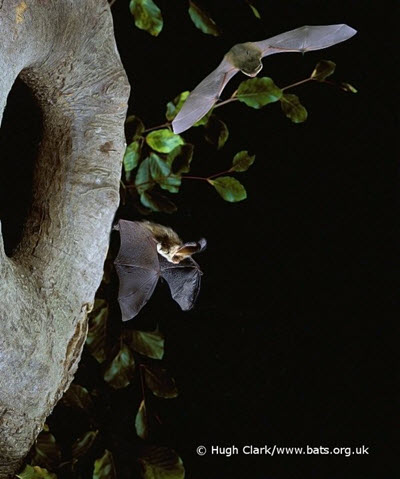Blog written by Tom Sheppard.
It can be difficult to explain elements of the work I do within the ecology and conservation field to my mother, who is profoundly deaf. Conveying details about identifying a species based on field markings or on colouration and shape is absolutely fine, but explaining the nuances in a bird call or the sound of a bat call through a heterodyne bat detector is a little more difficult.
The ways that disabilities can restrict access are well documented, and this is even more poignant in the context of nature and conservation. Outdoor activities are extremely sensory, so the impairment of one of these senses can significantly impact on the experience. However, one element of nature that is often beyond the limits of our senses for all of us, with the exception of some fleeting glimpses at dusk or dawn, is bats.
Bats have a unique position in that they are a great equaliser; they are often not easily seen by humans due to their nocturnal nature, and their vocalisations are normally at a frequency that is outside human range. Bat detector technology has allowed us to eavesdrop on bats by bringing their ultrasonic calls into human hearing range, and now, newer technology has made it easier for us to see those sounds through sonograms, helping us identify which species are flying above us.
A sonogram is a visual representation of the sounds made by bats, allowing us not only to hear the calls, but see the distinct variations in patterns. Along with the frequency of the calls, these patterns are invaluable for identifying species.
Equipped with an Echo Meter Touch and an Anabat Walkabout to equip us with live sonogram technology, I took my mum to a woodland and small lake close to where I grew up, where we were able to identify common and soprano pipistrelles, serotine bats and Daubenton’s bats. The bat detectors allowed both myself and my mum to overcome our shared deafness to ultrasonic bat calls and allowed me to demonstrate and explain my role with the Bat Conservation Trust (BCT) and the National Bat Monitoring Programme (NBMP).
The NBMP was set up and designed to allow people to directly contribute to expanding our understanding of British bats and influence conservation and policy going forward. The NBMP is an open programme and aims to be as accessible as possible. To this aim, BCT, in conjunction with local bat groups, has run a number of events for people with disabilities with great success. In order to fulfil the ambition of being an open programme, the NBMP maintains a stock of a variety of bat detectors, ranging from simple heterodyne bat detectors to the aforementioned Echo Meter Touch, that it loans out to NBMP volunteers who are in need of a detector during survey season. Additionally, the NBMP runs training events around the country to provide people with the knowledge, skills and experience necessary to survey bats in three of the NBMP surveys (the Field Survey, Waterway Survey, and Sunset/Sunrise Survey). You can find out more about the NBMP and ways to get involved on the Bat Conservation Trust website.
In another sense our abilities are defined by our levels of knowledge, skill and experience. In the past conservation, ecology and natural history have often been closed off to non-experts. As science is the realm of the experts, it stands to reason that everyone who is not an expert is ‘less-abled’. However, new generations of technology are beginning to open up areas of the natural world to people who have previously faced restrictions. The drive within conservation towards citizen science has expanded the reach of this technology to many people who have often been unintentionally excluded from the scientific world.
Technology is bringing access, education and capacity building to those people, for example:
- If you would like to submit data to contribute to ongoing scientific efforts, you can find many surveys and recording schemes listed on the NBN database.
- If you are looking for a location to go to and spend time in nature, Nature Finder and Wild Time will help you find the perfect spot.
- If you are unable to hear something but know that it is present, the Echo Meter Touch, Song Meter SM4 and Anabat Walkabout visualise bat and bird calls using sonograms.
- Other apps and programmes such as Chirpomatic, Warblr and Kaleidoscope will take recordings of anything you have heard and help you to identify what species the calls came from.
- If you were looking to hear something you weren’t able to identify in the wild then British-birdsongs, xeno-canto and batcalls can provide you with a range of recordings.
- A range of Facebook groups cover different species groups, enabling group members to submit photos of species for identification by others in the group.
It is becoming ever clearer that technology has enabled people who were previously restricted by physical disabilities, or simply through lack of knowledge or experience, to engage in nature.

